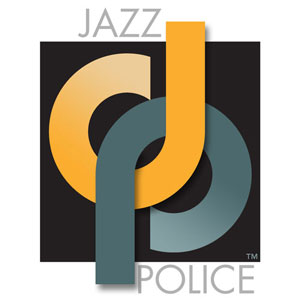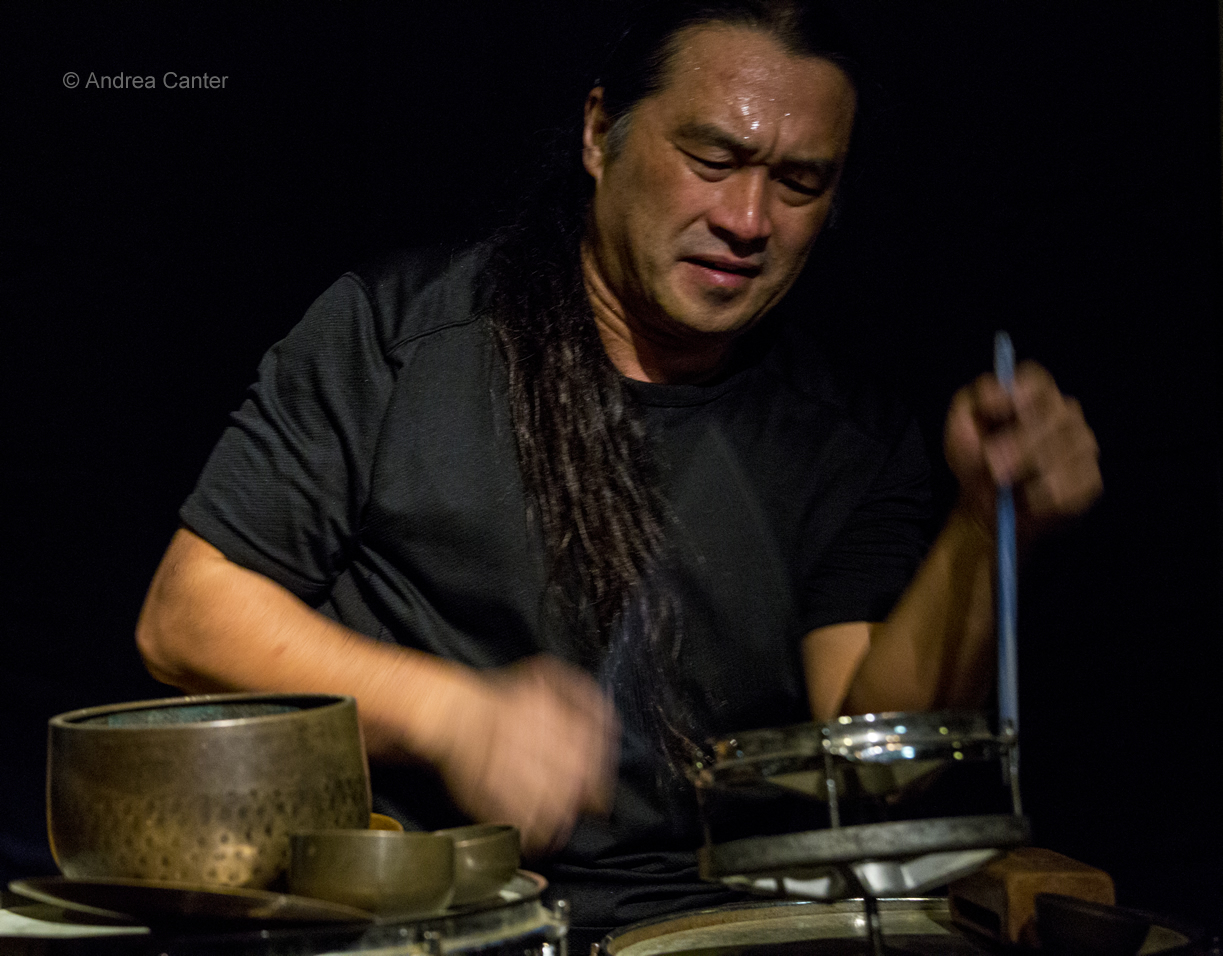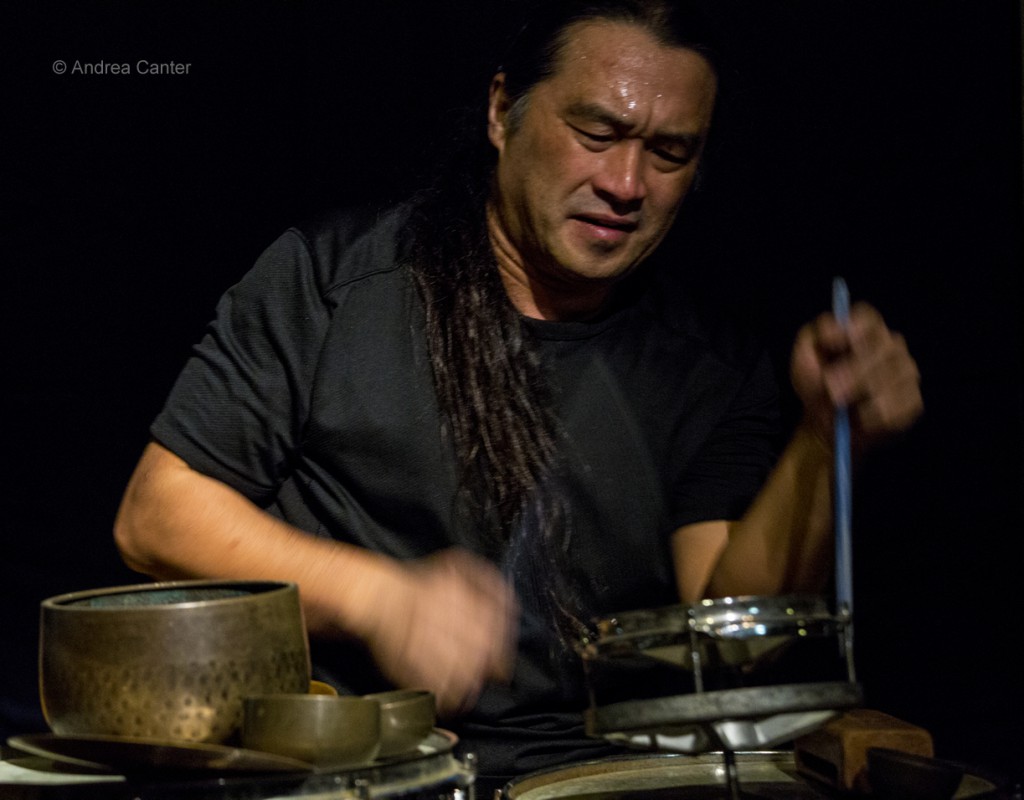
“…fully charged with a visceral intensity that can captivate a true listener….. The music is clear…It will purify any space. ” —Eric Zinman, Improvisor Magazine
“Over the past decade, my sound has evolved by viewing and reforming music from different angles. I have gradually developed my own way of constructing sound; my sound is the storyteller of my life.”– Tatsuya Nakatani
Twin Cities’ fans of avant garde percussion, as well as anyone interested in experimental music, have an exciting opportunity to hear and watch modern percussion master Tatsuya Nakatani when he returns to the Twin Cities on August 7, 7 pm at Studio Z. Nakatani is a mystic of percussion — he’s not only a master of the standard trapset, but a genie who summons other worlds from a formidable arsenal of intended and unintended “instruments” – gongs, cymbals, sticks, mallets, bowls, boxes, bows – pretty much anything one can hold and hit, rub or scrape. His organic creations infuse jazz, rock and noise with the space and beauty of traditional Japanese folk music. At Studio Z, Nakatani will be joined by Twin Cities’ bassists Adam Linz and Chris Bates, his cohorts in two previous shows here, most recently at the Black Dog in 2013.
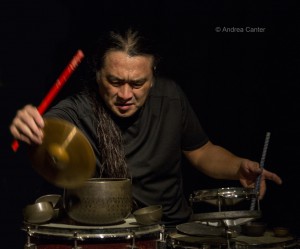
Originally from Osaka, Japan where he started on drumset as a teenager, Tatsuya Nakatani has released over 60 recordings, tours internationally, and collaborates with artists throughout the world. In addition to his career as solo and ensemble performer, Nakatani is a sound designer for film and television, a teacher of master classes, and head of H & H Production, an independent record label and studio in Easton, PA. He improvised a music score for the Smithsonian in conjunction with the Hiroshi Sugimoto exhibition, and has performed at the Kennedy Center and the Chicago Cultural Center. His latest project is the Nakatani Gong Orchestra, which builds community ensembles performing on multiple bowed gongs under his direction, as recently presented at the Kennedy Center in Washington, DC.
On his website, Nakatani describes his approach to his music. “I make sound by controlling MA at the appropriate moment. MA is a Japanese word meaning space, distance or silence. I have found that MA complements sound itself. I combine the use of manufactured and homemade instruments in my work. Those instruments are drums, large hand-hammered Chinese gongs, Japanese Buddhist bowls, specially carved sticks, and occasionally kitchen tools. I hand-make hardwood bows to bow gongs and cymbals. Bowing creates a long sustained sound in percussion, making an identifiable note, timbre, and texture. All of these instruments are carefully tuned and matched in sound depth to balance my family of percussion instruments.”
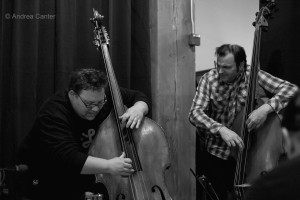
Chris Bates and Adam Linz are hardly strangers to improvised music, as local leaders of experimental jazz through solo work and their various ensembles—Bates leading his own Red 5 and Good Vibes Trio, and appearing regularly with the Atlantis Quartet, Framework, Tall Tales and more; Linz particularly with Fat Kid Wednesdays, Embezzler, and his own Le Percheron, as well as in a variety of collaborations with local and European musicians. Both bassists are often found on the bandstand at the Icehouse, Studio Z, Jazz Central and Black Dog, venues well known for presenting experimental works.
The upcoming show at Studio Z marks Nakatani’s fourth visit to the Twin Cities, appearing with Milo Fine at Art of This gallery (2009) and at Rogue Buddha Gallery (with Bates and Linz) in 2010, and reprising his gig with the bassists in 2013 (Black Dog). When listening to tracks from his solo percussion CD Primal Communication, one is struck by a wild array of scrapes, screeches, groans, scratches, thuds, creaks, whines….sounds and rhythms that emulate horns, strings, human voices, inhuman soundscapes. How are the sounds produced? Takatani’s creations demand visual access—he must be appreciated live.
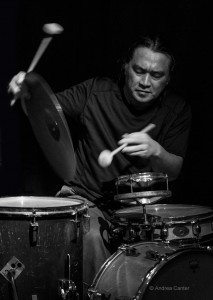
My first live encounter with Nakatani was at the Rogue Buddha Gallery in northeast Minneapolis, a long narrow space that easily accommodated a three-sided array of gongs. In solo, Nakatani began at one end and gonged around the perimeter and back, like a thunderstorm that began with a low rumble, reached a peak of intensity in a shower of rain, and receded into mist. At the Black Dog a few years later, however, space was limited to a small square stage, and Nakatani similarly limited his playground to one middle-size gong hanging by the trapset, accompanied by a toybox filled with bowls, blocks, cymbals and bows. (He brings along more bows than a concert violinist. And he uses them all.)
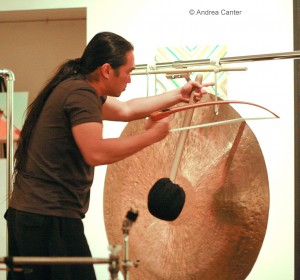
The three musicians–Nakatani, Linz and Bates– are ideally suited to collaboration. Nakatani uses the bow as a major force in creating soundscapes. Linz and Bates use their hands and bows as percussive forces in augmenting their range of dynamics and rhythms. And none of these artists is confined by convention in any fashion, physically or musically. Yet the result is clearly music, not mere sound. Most fascinating is the range of pitches lurking within the thin metal of the gong, as struck by a mallet or set into imperceptible vibration by a bow sliding across its edge. Or the qualitative alterations of the double bass sound when the strings are bowed at the extreme top or bottom of the instrument.
Appreciate a wild world of sound that must be seen as well as heard, Sunday August 7, 7 pm at Studio Z in St. Paul’s Lowertown.
Studio Z is located at 275 E 4.Street on the second floor of the Northwestern Building in St. Paul’s Lowertown. Cover $10-20 (sliding scale); www.studiozstpaul.com
